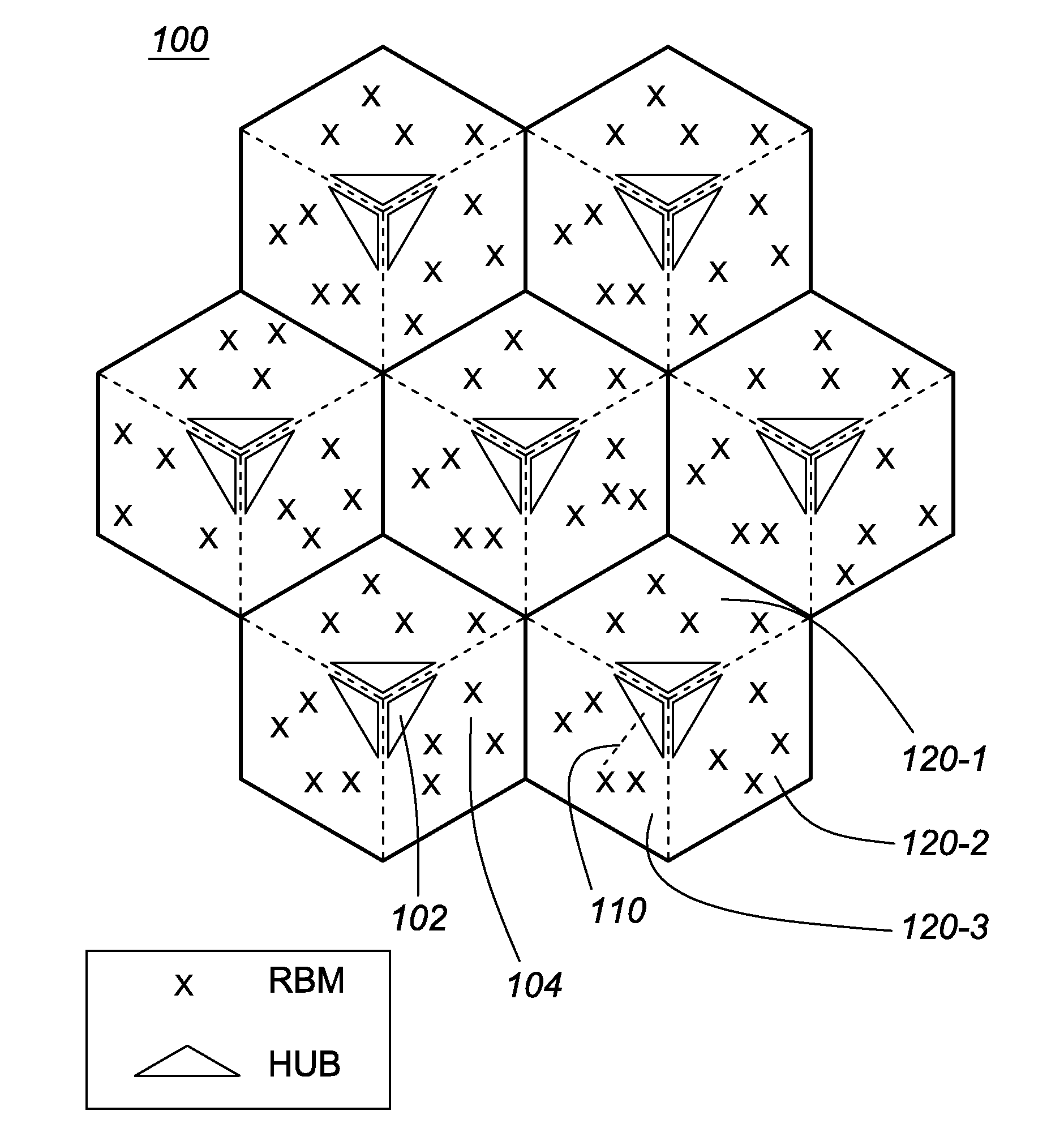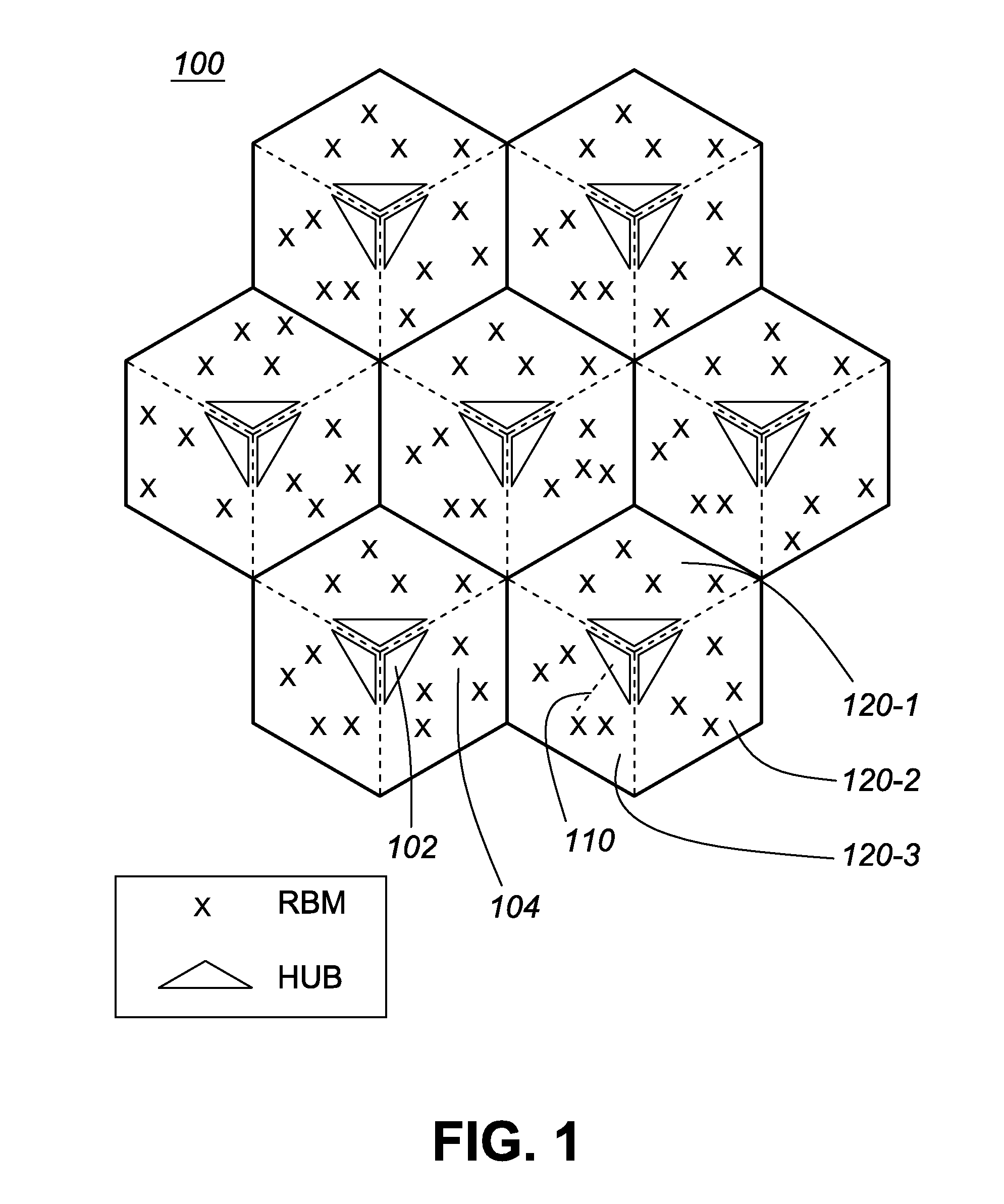Method and apparatus for coordinated power-zone-assignment in wireless backhaul networks
a wireless backhaul and powerzone technology, applied in the field of wireless backhaul, can solve the problems of not guaranteeing an optimal solution and a one-to-one mapping constraint, and achieve the effect of ensuring the optimal solution
- Summary
- Abstract
- Description
- Claims
- Application Information
AI Technical Summary
Benefits of technology
Problems solved by technology
Method used
Image
Examples
Embodiment Construction
[0023]FIG. 1 shows a schematic diagram of an exemplary wireless backhaul network 100 comprising seven cells, with three sectors per cell (i.e. sectors 120-1, 120-2 and 120-3), one hub 102 per sector, and four Remote Backhaul Modules (RBMs) 104 per sector. Thus, in general, the system model is that of a wireless backhaul network comprising N hubs, each serving K RBMs, for KN RBMs in total.
[0024]FIG. 2 shows an example of an SFR-based framing structure of three interfering hubs. The bandwidth f1 of each hub transmission is divided into three orthogonal segments f2, f3, and f4. The transmit frame structure of every hub comprises two time zones. The first time zone contains the data associated with one RBM, and utilizes the entire bandwidth. The second time zone contains the data for the other three RBMs, which are separated from each other in frequency, using different RBM-to-subband assignments. Each of the subband zones, called power-zones, operates at a pre-assigned power allocation...
PUM
 Login to View More
Login to View More Abstract
Description
Claims
Application Information
 Login to View More
Login to View More - R&D
- Intellectual Property
- Life Sciences
- Materials
- Tech Scout
- Unparalleled Data Quality
- Higher Quality Content
- 60% Fewer Hallucinations
Browse by: Latest US Patents, China's latest patents, Technical Efficacy Thesaurus, Application Domain, Technology Topic, Popular Technical Reports.
© 2025 PatSnap. All rights reserved.Legal|Privacy policy|Modern Slavery Act Transparency Statement|Sitemap|About US| Contact US: help@patsnap.com



